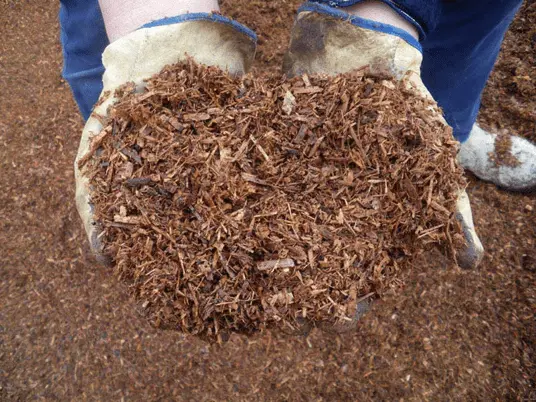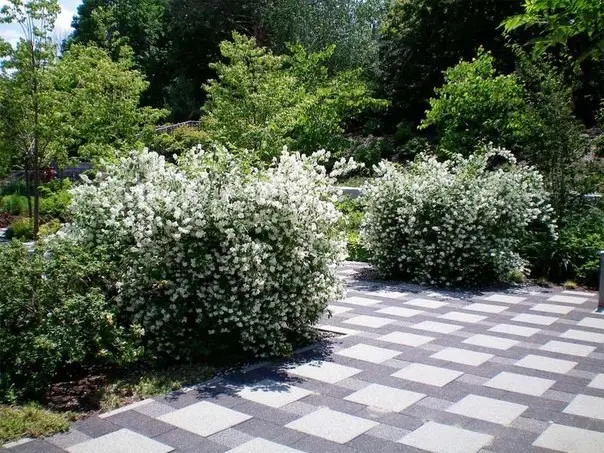Contents
Thanks to its beautiful flowering and pleasant delicate aroma, garden jasmine is very popular among summer residents. However, improper care can lead to a deterioration in the aesthetic appeal of the shrub. From our article you will learn how to cover jasmine for the winter.
Preliminary events
Jasmine care in the fall begins with examining the bush for traces of various diseases and the presence of parasitic individuals. If signs of diseases and harmful insects are detected, the garden plot should be treated with a special microbiological preparation “Fitosporin-M”.
Jasmine, which is popularly called mock orange, belongs to moisture-loving ornamental crops, but excess moisture in the soil can lead to rotting of the root system. For this reason, the need for water-charging irrigation on the eve of winter cooling should be determined by the weather. If the autumn turned out to be damp and generous with precipitation, the soil under the sprawling shrubs can not be moistened.
Removing weeds and loosening the soil contribute to the enrichment of the mock orange root system with oxygen. At the end of summer or in the first days of autumn, you need to feed the shrub with phosphorus-potassium fertilizers. Nitrogen-containing preparations are used in spring and summer, as they stimulate an abundant growth of the vegetative mass. The young shoots that have appeared will not withstand even the slightest frost.
One of the stages of preparing garden jasmine for wintering is rejuvenating crown pruning, which maintains the decorative effect of the shrub. According to the recommendations of experienced gardeners, all old shoots injured by insects, rodents and diseases are subject to removal. It is also recommended to cut branches aged 4 years and older. In the absence of rejuvenating pruning, the ornamental shrub quickly loses its endurance and winter hardiness.
Video: “Autumn pruning of mock orange”
After watching this video, you will know how to properly winterize jasmine.
Do I need to hide
Many beginner gardeners wonder if sprawling garden jasmine shrubs need to be covered to protect them from the coming cold and frost. First of all, it is necessary to familiarize yourself with the varietal characteristics of the cultivated crop and the characteristics of the climatic zone of growth. So, the varieties Elbrus, Snow Avalanche and Dam Blanche are grown in the Leningrad region and in the regions of central Our Country. For the northern and eastern regions, including Siberia and the Urals, more winter-hardy hybrids from the breeder Nikolai Vekhov are suitable. We are talking about such varieties of mock orange as Arctic, Chamomile, Pompom, Zhemchug, Moth Ballet and Yunnat. Less hardy and requiring special attention of gardeners are ornamental shrubs Mont Blanc, Pyramidal, Glacier and Schneeshturm.
Regardless of the varietal characteristics, young seedlings and shrubs up to 4 years old are subject to shelter for the winter. The root system of a young mock orange is susceptible not only to severe frosts, but also to sudden changes in temperature conditions.

Insulation materials
Shelter of ornamental shrubs occurs in two stages. First, they dig and mulch the soil in the trunk circle. As a mulch, you can use a combined mixture of sawdust, bark, peat, dry foliage, hay, straw, small spruce twigs. The height of the mulching layer should be within 10–15 cm. With a higher shelter, the root neck begins to rot, which leads to the death of the shrub. If the mulch layer is only a few centimeters, then in severe frosts, the young shoots of the rhizome may freeze.
At the second stage, the shelter of the crown of the bush is carried out. The branches of garden jasmine remaining after pruning are collected in a bundle and tied with twine. From above, the mock orange bush is covered with lutrasil, agrofibre, geofabric and other varieties of “non-woven fabric”. As a covering material, you can use burlap and dense white polypropylene bags.
The plastic film, which is often used by novice gardeners, does not allow air to pass through. Violation of air exchange causes the appearance of mold and fungus on the root neck and jasmine shoots. When using roofing material or polyethylene to cover plants in the garden, do not forget to leave holes for air to enter.
Cover technique
The technology for preparing and sheltering ornamental shrubs for the winter depends not only on the degree of frost resistance of plants, but also on the climatic zone of growth. Spreading mock orange bushes are grown in almost every region of Our Country. Growing in the south of the country – in the Kuban, in the Krasnodar Territory, Adygea and the Stavropol Territory – ornamental plants do not require special shelter. Warm, mild and snowy winters do not pose a danger to jasmine.
Central Our Country, including the Moscow region, has a changeable climate. Sharp jumps in temperature can lead to the formation of glaciers on the processes of the root system and young shoots. To prevent freezing of jasmine growing in the garden, it is recommended to mulch and insulate the bush with covering materials.
In Siberia and the Urals, decorative crops are additionally insulated with branches of pine spruce branches, fallen leaves, dry sand and earth.

With the advent of spring, do not rush to “wake up” the mock orange, the shrub wakes up gradually. Active sap flow begins in young shoots, old branches may look frozen and lifeless. But after a certain period, young leaves appear on adult branches.









